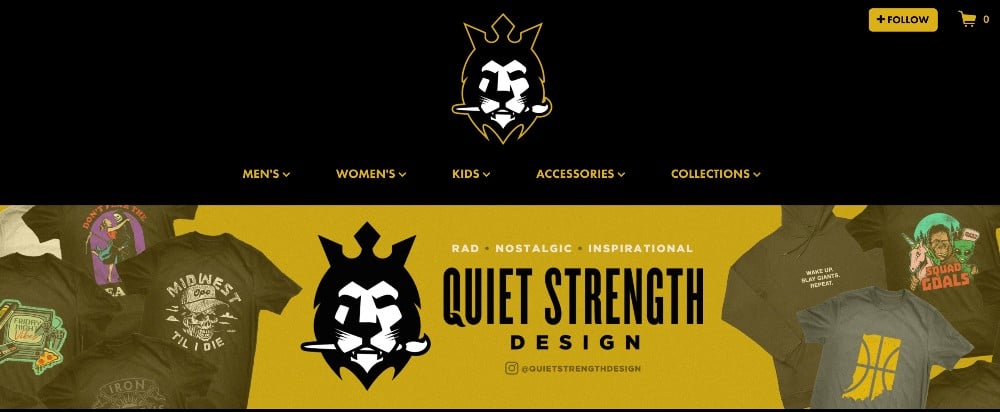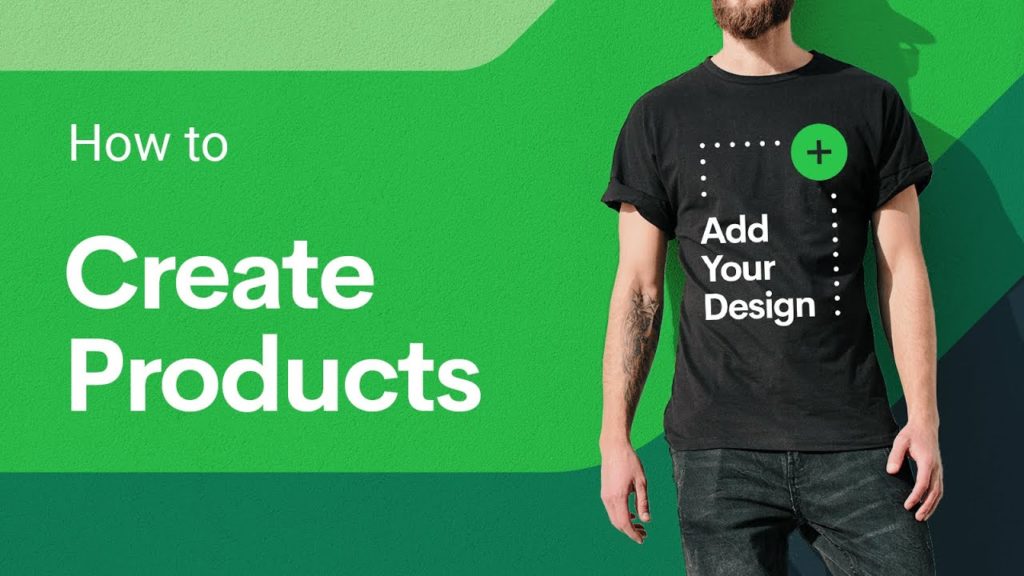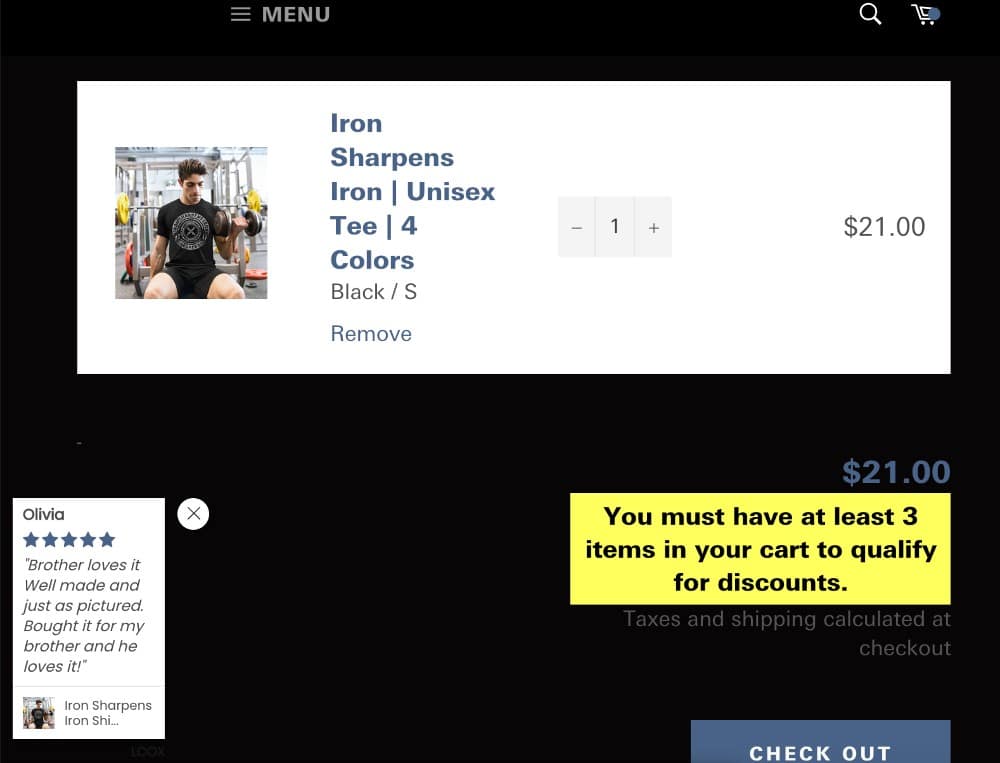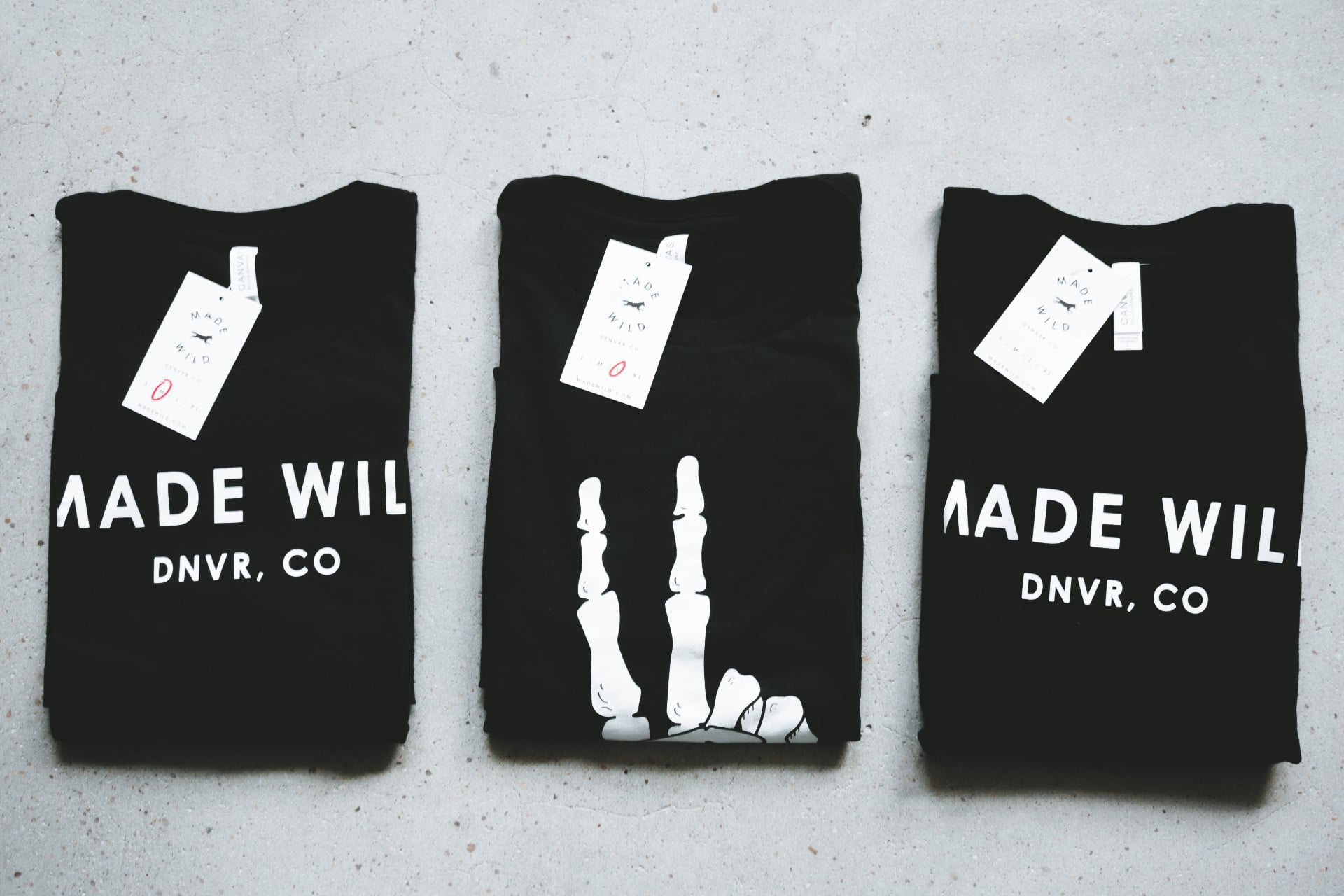If you have a T-shirt business, you want to make enough profit to make a sustainable income. That means charging enough for each shirt, but not so much that you’re not competitive. So, what are the guidelines for how to price T-shirts for retail?
To price your T-shirts for retail, you will need to assess your expenses accurately and price to cover costs and add enough markup to make enough profit. Spending a bit more upfront can greatly increase the amount you can charge. Retail prices for a good shirt range from $24.99 to $29.99.
Pricing strategy is a vital part of having a competitive business, and a crucial part of pricing strategy is a correct assessment of your expenses. This guide will give you a breakdown of the various factors influencing how you should price your T-shirts.
I am going to give you as much of the information you need depending on what type of t-shirt business you are planning to run, but will give some exact pricing details that I am using in my own t-shirt business at the end of the article. Enjoy!
The Basics Of T-Shirt Pricing For Retail
To run a sustainable business selling T-shirts, you need to make a decent profit margin per shirt while keeping your prices competitive so that you don’t price yourself out of the market.
Because the T-shirt business is a saturated market, you shouldn’t try pricing too low to beat your competitors, as it will simply trigger a race to the bottom (or you will make too little profit to be sustainable).
Pricing will not be your unique selling proposition (USP) in the T-shirt market. Instead, your USP will be the quality of the fabric, the uniqueness of designs, and the particular niche you target.
With that in mind, pricing strategy for T-shirts comes down to assessing your expenses correctly and then adding on a healthy but competitive profit margin. We will help you with strategies you can use when pricing.
How To Calculate Expenses For A T-Shirt Business
To price your T-shirts, you will first have to assess your expenses accurately. It is essential to do this with care.
You don’t want to underestimate your expenses and add too low a profit margin.
On the other hand, overestimating your expenses will make your final selling price too high, and you will not stay competitive.
Expenses for a T-shirt business come down to the production cost of making the shirts (also known as self-cost or base cost), design costs, and platform or marketplace costs.
Let’s examine these factors to get a good idea of how much you will be spending on each and where you can save costs.
The Base Cost For A T-Shirt Business
The base cost is how much it costs to make the basic T-shirt. It is a combination of making the fabric and the cost of making the shirt.
The base cost will be higher for better quality fabric, heavier weights of material, and larger shirts because they take more cloth to make. Long-sleeve shirts also cost more for the same reason.
The following table gives approximate base costs for some popular brands of short-sleeve plain T-shirts suitable for use as a blank canvas. These prices would be what you would expect if you buy wholesale:
| T-shirt Brand | Approximate Base Cost |
| Hanes Unisex 5.2 oz Comfortsoft Cotton T-Shirt | $2 |
| Gildan Adult Unisex 5.3 oz Heavy Cotton T-Shirt | $2.40 |
| Gildan Adult Unisex 4.5 oz Softstyle T-Shirt | $3 |
| Gildan Adult Unisex 5.5 oz 50/50 T-Shirt | $2.90 |
| American Apparel Fine Jersey Short-Sleeve T-Shirt | $4.20 |
| Bella Canvas Unisex Jersey T-Shirt | $4 |
| Next Level Unisex Cotton T-Shirt | $5 |
| Fruit of the Loom Adult 4.7 oz Sofspun Jersey Crew T-Shirt | $3.50 |
Bear in mind that the base cost tends to be lower with a bigger order because manufacturers give bulk discounts (generally applied in increments of a certain number of shirts ordered).
So, if your customers order more shirts, your base cost will be lower. Conversely, if you don’t hit the sales volumes required to get the discounted price from the T-shirt manufacturer, your base cost per shirt will be higher.
It’s worth buying a good quality T-shirt blank to charge higher prices for your final product and make a higher profit margin. Paying $1-2 more upfront can allow you to charge $10-15 more for your final product.
Getting an even more expensive, higher-quality T-shirt blank will help you if you aim to sell at premium prices (up to $60).
What Type of T-shirts Do I Print On?
You may not have asked this question, but I will answer it just in case. For our Shopify and Etsy stores, I print mostly on Bella Canvas 3001 unisex t-shirts.
I also do some printing on Next Level 3600 (similar but a little higher priced) as well as a Tri-blend t-shirt called Next Level 6010. The Tri-blend is pricier but it’s a great feel for the right design and target audience.
Design Costs For A T-Shirt Business
If you have design skills and software, you can do your own designs for your T-shirt business. Because this will take some of your valuable time, you should include a cost to pay yourself for your time. Pay yourself $10-15 per design for a very simple text design created in Canva.
For more advanced or unique designs created with Photoshop, pay yourself at least $50 per design.
On the other hand, you do not have the necessary design skills and software, in which case you will have to pay someone to do the work for you. How much you pay will vary, and there are ways to reduce the cost, but you will have to factor in design costs.
There are a few places you can get designs created. Prices vary. We have used:
Fiverr: Designs as low as $10. But be careful as quality designers are hard to find.
Design Crowd: Designs around $70-95. We have used Design Crowd on several of our designs, including the Iron Sharpens Iron design below in this article.
Freelance Designer: $100-300. A great freelance graphic designer is going to be more expensive, but the quality you get is hands down worth it. We have paid up to $300 for a few of our designs.

Calculate design cost per shirt as follows:
Design cost / number of designs = design cost per T-shirt
Printing Costs For A T-Shirt Business
If you are printing the T-shirts yourself, you will also have to pay yourself for the time it takes to print a shirt, from beginning to end. You can use the average hourly wage in the US ($15-20) to calculate how much you should pay yourself. If your normal wage is much higher than this, then it doesn’t make sense for you to do the printing beyond the startup.
Use this hourly wage to estimate what you would be paying someone else to print on the shirt for you, whether screen printing, heat transfer, vinyl printing, or sublimation, and you will need to factor in this cost.
Today, due to the current jobs market, you will likely need to pay up to $25/hour to get someone that you can train to run your printing equipment. The $15-20 rate would apply to “assistants” but not someone that is managing the printing process.
This factor is typically included in the platform costs if you use a platform.
Platform Or Marketplace Costs For A T-Shirt Business
You had to order the T-shirts upfront and manage your inventory in the past. These days, you can use online platforms or marketplaces to sell your shirts. The platforms take care of customers placing orders for you and handle shipping.
This fee will have to be taken into account when assessing expenses for your business. They will either be a percentage of your sales or a fixed fee. Some platforms have hidden costs that you will find difficult to include in your calculations.
Research carefully before committing to a platform.
Two of the platforms we have had success with are print-on-demand and marketplace platforms. For print on demand, we recommend Printify or Printful. For marketplace sales, we really like the Etsy platform.

Etsy’s seller fees have been really good overall at 5%. But in April 2022, Etsy is raising their seller fees to 6.5%. This is a significant increase. While it can justify the rate with the amount of customers Etsy can get in front of your brand, this is still something you need to consider when calculating your costs across each sales platform.
Retail Costs For A T-Shirt Business
If running a physical clothing store, there is rent to consider, wages for any employees, utilities, advertising, bank fees, and other overhead expenses.
If you start your t-shirt business from home, while you don’t rent the physical building, you will still have up to 10% of your utilities, wages, and other overhead expenses to figure.
If you have an online presence for your physical clothing store, you will have to factor in the cost of setting up and running a website and any service charges for customers using their cards to pay.
I am partial to Shopify. Shopify has the best overall eCommerce software online. While it is expensive to scale, since prices go up as you need more plugins and features, scaling means your business is growing. Start with the $29/month basic plan. The seller fees on this platform (because it’s your own store) are less. The fees average 2.4% to 2.9% + .30 per order, depending on the plan you choose.
According to the video below by Transfer Express, you want to charge approximately 15% for overheads.
How To Price Your T-Shirts To Sell
Now that you know your expenses, you can calculate your retail price. Use the following formula:
Retail Price = [(cost to produce) ÷ (100-profit %)] x 100
Most retailers shoot for a profit percentage of 50%, while online stores generally go for 25-40%.
The profit percentage of at least 25% should be above your platform costs. Once you have been selling for a while and have data on the volume of sales, you will better be able to figure out how much you are losing to platform costs and adjust your price accordingly.
The so-called ‘keystone’ for retail is a markup of two times cost or 50% of the retail price. However, apparel markup is typically slightly higher.
Tip: You can price your t-shirts higher on your eCommerce store than you do on a platform like Etsy. The reason for this is your store is more perceived as a brand, while on a platform the brand aspect is not as strong because everything you sell is under the platform URL and their webpages.
Here are some competitive pricing tips for your t-shirts:
- Price your shirts according to your target market. Younger target markets require lower prices.
- Research your competition to see their pricing.
- Recommended retail prices are between $24.99 and $29.99 per shirt, but premium shirts are $30.00-59.99.
- Some successful sellers price at $3-5 dollars above the usual range.
- Use non-round numbers (ending in .99 or .98) when pricing. It’s a simple psychological trick that convinces people that they’re paying less, even if it’s only a cent’s difference.
- Keep designs simple: one-sided, with 1-3 colors to keep prices reasonable.
- A specialized niche lets you charge more.
- Don’t be scared to charge what your shirts are worth. You’ll know you’re pricing right when your customers complain about your prices, but keep buying anyway.
- Free shipping helps to boost sales.
Creative Pricing Strategies For A T-Shirt Business
There are various pricing strategies you can adopt for your T-shirt business:
- You could use market-oriented pricing, where your shirts are the same prices as the average for the market. It’s a safe strategy but sets you up for competition with other sellers.
- Decreasing your price to a dollar below the average for the market while keeping the quality could net you more customers. You can also attract more customers by pricing the same as everyone else but increase the value that you offer.
- You could also try discount pricing. Set your price higher (maybe even considerably higher) than the average to increase its perceived value. Those who want your product badly enough will still pay for it. Run occasional sales or discounts, for example, during the holiday season.
- Another strategy to try to break into the market is penetration pricing. Start by charging lower than average prices, and as you gain market share, increase your prices.
- Bundle pricing involves selling a bundle of more than one item for a discount. It’s the classic ‘buy two, get 50% off’ strategy. People love a bargain, so you may do well with this strategy.
- Use anchor pricing, where you display the original price and what customers can get the item for. Doing so shows them what a bargain they are getting and increases sales. You can mix this strategy with discount pricing or bundle pricing.
Pro Tip: Of the pricing strategies above, I have had the most success with “Bundle pricing” and “Discount pricing”. I typically offer both, and the customer can only take advantage of one or the other. So if they use the bundle pricing app in Shopify, when a customer adds two t-shirts to their cart, there is a message that if they add one more, they get X% discount.

I tier my discounts by quantity. So there is a price break at 3, 5, and 10 shirts. This past year in 2021, this pricing strategy resulted in a very high amount of orders that were at least 3 quantity, with quite a lot of 10+ t-shirt orders.
My Own T-shirt Pricing Example
For my own pricing strategy, I currently have the above Iron Sharpens Iron shirt priced at $21.00. This design is printed on a Bella Canvas 3001 t-shirt and the design is a high-quality unique design. However there are no tags or branded logos on this tee, and it is a front print only. Therefore, I am priced accordingly. And yes, this is a platform POD print from Printify.
If I was to add custom “brand tags”, logo, sleeve print, etc., I would price the above shirt closer to $25.
Conclusion
Pricing T-shirts for retail is fairly complex, and your exact business model will play a role in determining how you should price. You will have to assess your expenses accurately and add a healthy markup to make a good profit.
The range of retail prices for good quality custom T-shirts is between $24.99 and $29.99, while premium shirts can go as high as $59.99.
Bryan E. Robinson is the former owner of TshirtGrowth. He has sold t-shirts since 2006 through dropshipping, screen printing, vinyl printing, DTG, Print on Demand, and more. Bryan has created his own t-shirt designs through Photoshop, Canva, and other platforms, as well as worked with freelancers to create many of his designs. Besides t-shirts, Bryan has over 18 years of experience in online marketing with eCommerce, B2B SaaS, B2C products, and more.


